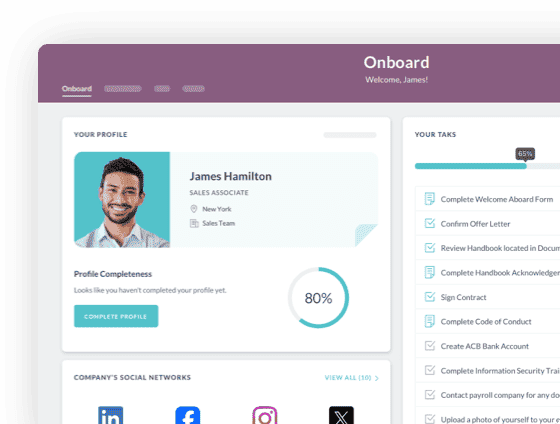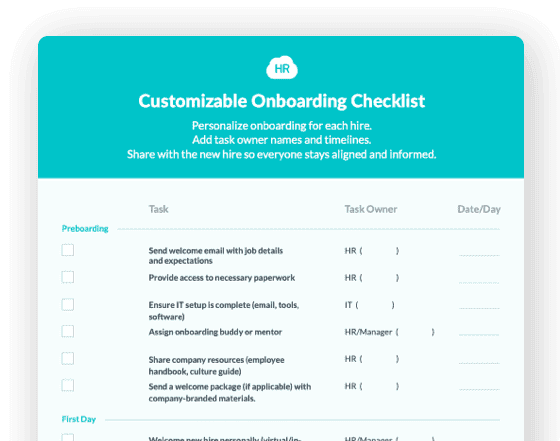Blending National Culture With Corporate Culture | HR Cloud



 Cut onboarding time
by 60%—here's the
Ultimate Checklist
that helped do it.
Cut onboarding time
by 60%—here's the
Ultimate Checklist
that helped do it.

If you work in a global firm and have interaction with multiple office locations throughout the world, understanding how national culture and corporate culture can be combined might be a difficult and confusing task, albeit a necessary one at that.
A few years ago, I worked for such a firm and my office location housed two very distinct national cultures; however, because we all lived and worked in the same location, it was easier to adapt where needed. For example, the firm provided ample holiday and paid time off to all, so that if your particular religious or national holiday wasn’t included in the typical US holiday schedule, you could still use the time allotted, as needed. Most often, these national cultures, working side-by-side, got along just great. Awareness of culture and even food preference was ever present, as we saw each other on a regular basis. As relationships were formed, national culture was shared and corporate culture was strengthened.
Take that same company and look across the world to India; for example, where things were a bit different. The national culture was something we were trying to learn here in the U.S., as the firm expanded its capabilities. The corporate culture was something of a “be direct and to the point….don’t worry about niceties” (busy, busy!) while the national culture of India was very much a “let’s say hello and ask how we are” (slow down!) before we talk business. Working in Washington DC with a variety of national cultures in the same building was different than working with colleagues across the world, where we didn’t get to see them every day or learn about their preferences. Throw in managing teams that are split between the two locations and… well, you’ve got lots of learning to do about how national culture works within a corporate culture.
Where to start?
Leadership
Teams take their lead from leadership. It’s that simple. If you have leaders that embrace a “you’re in America; you speak English” attitude, that will reflect poorly on employees who are trying to build cohesive working relationships with those around them. You’ve heard the saying, “love begins at home” and in this case, it’s the same principle. Start at the top. Incorporate national culture as a part of what makes your company unique. The diversity of ideas, thoughts and personalities influence creativity and innovation, which drives your product development and revenue, ultimately placing your company as the leader in the marketplace.
Tweet: Incorporate national culture as a part of what makes your company unique. @HRCloud
So, start at the top, but then hold employees accountable. This can be done by adding culture development as a priority to your performance management process, using technology to help you streamline and define those goals. For example, if you don’t have a mentoring program, this is the perfect first step to creating cohesion among teams. Align team members that have the best chance of teaching each other about individual/national culture and how it blends with corporate culture. This is best accomplished when you take one team member that works say, in Washington D.C. and pair them with another team member that works in a Dallas office. You get the idea. Partner employees that can share experiences about work, projects, culture, etc. You don’t have to pair within teams either; you can pair wherever it makes sense. Form partnerships with other offices, other teams—build out your capabilities by introducing knowledge through regular sharing and conversation.
Communication
We talk about this topic a lot; it creates the opportunity for building great relationships, yet it can destroy a partnership in seconds. The way we communicate, whether we’re using body language, text, or face-to-face, speaks volumes about how we feel about those around us. If you are managing a diverse team of employees across the globe, it’s important to think before you speak, or write for that matter. When in doubt, lean towards being respectful and tactful and avoid sarcasm or innuendo. As you spend more time in conversation and even more time listening and watching, you’ll gain a better understanding of what works and what doesn’t.
Patience
We’re all busy. We operate in a fast-paced environment with never ending responsibilities and deadlines. But, we often get so buried in our work that we forget to be patient with ourselves and with others. When we lack patience, misunderstandings occur. People begin to question trust, loyalty, and the team goals they’re working to achieve. When there is an absence of patience, the train speeds down the track with no time to get on, off, or make course corrections.
Be patient. Be helpful. Be encouraging. Be understanding. In a world with no barriers and endless technology, there’s really no excuse not to blend national culture and personal diversity with corporate culture.
If you want to lead, start blending.

Keep Reading
45 Boss Day Messages That Actually Mean Something (2026 Guide)
When is Boss Day 2026? Mark your calendar for October 16, 2026 — the annual opportunity
Birthday Wishes for Coworkers: 50+ Messages That Build Workplace Connection
A coworker's birthday isn't just another calendar date—it's a meaningful opportunity to
Embracing Diversity: Recognizing Different Cultures in the Workplace
Workplaces today reflect the incredible diversity of the world around us. People bring
Like What You Hear?
We'd love to chat with you more about how HR Cloud® can support your business's HR needs. Book Your Free Demo

Build a Culture of Recognition. Boost Engagement. Guaranteed.
Workmates empowers employees to stay informed, connected, and appreciated—whether they’re on the front line, in the office, or remote. Recognition drives 12x higher engagement.Trusted by industry leaders in every sector




Cut Onboarding Costs by 60%.
Take the confusion and follow-ups out of onboarding with automated workflows, digital forms, and structured portals—so new hires ramp faster 3X quicker.Trusted by industry leaders in every sector





